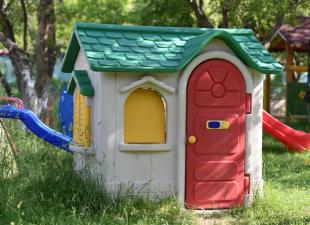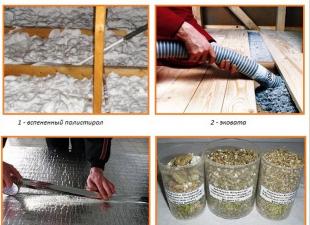Waste oil stove is the best option for heating warehouse, garage, work premises. The result of using such a furnace combines good heating and low cost of the fuel used. Waste oil ("working off") refers to those types of waste that are in large quantities at any service station or in garage facilities. This oil is difficult to recycle and almost impossible to dispose of.
Waste oil stoves are exactly the way to reuse this product. Any oil that has served its life - transmission, engine, industrial - can serve as a fuel on which such home-made heating installations will operate.
Features of operation
Due to its design, the working furnace can be made with your own hands. The undoubted advantages of this type of heating include:
- profitability. Waste oil stoves are economical both in the manufacture of maintenance and in the choice and consumption of fuel;
- mobility. The design drawing of the furnace provides for small dimensions, therefore, the furnace body can be easily dismantled and moved to another place;
- energy independence. The operation of such equipment is not connected either with power grids or with gas pipelines. It does not require additional power supplies in the form of rechargeable batteries and batteries;
- the design of the oil stove allows its upper part to be used as a hob.

At the same time, there are some problems associated with the operation of oil-fired heating stoves. These include the need to install a high - up to 4 meters in height - chimney, as well as systematic weekly cleaning of the stove from dirt and soot.
Necessary materials
In order to assemble a furnace for working off with your own hands, you do not need to buy new metal products. You can use scrap metal, which is found in almost every garage. For example, a compressor housing from a refrigerator or any old cylinder can serve as a prototype for the manufacture of a combustion chamber.

You will also need two thin-walled pipes about 4 m long and 8-10 cm in diameter. They will play the role of the main and additional radiators. Another pipe is needed for the hood. The approximate drawing of the single chamber oil furnace is shown below:

Manufacturing technology (one chamber)
In the process of operation, the furnace with waste oil must be in an upright position. To do this, you need to make legs - pieces of pipes or corners are suitable for this. Identical pieces of metal about 20 cm long must be welded to the body of the future stove. After that, we install the homemade heater in an upright position.

In the upper part of the stove we cut a hole for the hood. In terms of dimensions, it should correspond to the radius of the prepared pipe.
You can try to drill a small cutout with a grinder, and it is better to make a hole of a larger diameter with a welding machine.
We weld on the exhaust pipe. We make holes in the pipe body. For this work, you can use a grinder with a cut-off wheel. The holes are made at a distance of 10 cm from the body and up to 0.5 m high. In the same pipe, at a distance of one meter, we make an incision in the second pipe - for an additional radiator. This work can be done with a welding machine. An additional radiator is located parallel to the floor, along the wall. At the top of the homemade stove, we make a hole for the fuel supply.

This is the simplest oven option that can be improved and made convenient and safe. For example, put a sheet of iron on a horizontal radiator - then the working oven can be used not only for heating, but also for heating water and cooking.
Plan (two cameras)
The furnace layout is represented by two chambers connected by a large diameter pipe with drilled holes.

The lower half will be a container for used oil to be used as fuel. At the same time, it will be both a combustion chamber and an evaporator. An approximate drawing of such an installation is offered below:
Bottom part
Two-chamber waste oil ovens must have legs. The air gap between the floor and the bottom of the stove will serve as an additional factor in improving the heating of the room.

A hole must be made in the lower body, covered with a flap - to adjust the operating mode and supply fuel to the chamber.
Frame
A pipe with holes is welded into the upper cover of the lower case. This pipe will become an afterburner in which boiling oil vapors will be burned. This design scheme can provide almost complete combustion of the fuel.

A heated cylindrical body is welded to the upper part of the heating system. There should be a partition inside it to retain warm combustion products.
The flue pipe is welded to the upper surface of the heating module. The diameter of such a pipe should be more than 100 mm, the length - 3-4 m. The chimney is placed vertically or at an angle.
The chimney should be located strictly vertically and with access to the street - this is the only way to avoid spontaneous damping of the oil stove.
The chimney drawing shows that this part of the heating system should be collapsible - this way it will be easier to clean it from dirt and soot.

For the continuous operation of the oil heating system, it is necessary to ensure an uninterrupted supply of fuel to the furnace body. To do this, you can weld an additional container just above the evaporator chamber, which will be connected to it with a separate metal pipe.
You can increase the efficiency of the stove, for example, by forcing the air flow to the top of the stove. For this, the scheme is slightly changed: an air heating chamber is mounted on the upper compartment of the heater. A fan is installed next to it at a safe distance.

With the help of such a fan, air is blown into the air exchanger, heated there and supplied to the heated room.
The basic drawing of the stove can be improved: for example, a heating boiler with a water circuit can be made on its basis. This way you can heat several rooms in one building.
Operation methods
The oil itself does not burn. To start the reaction, you need to throw a rapidly flammable "seed" into it. In the fuel compartment, about a glass of gasoline, alcohol or solvent is poured over the used oil. Using a wick on a long base, the seed is ignited. When the "seed" burns, a certain amount of heat is released, which is necessary for the oil to boil.
The oil evaporates when it boils. In the afterburner pipe, hot oil vapors enter, which give a stable column of fire in the pipe. After 5-10 minutes after warming up, the furnace goes to a stable operating mode. With the help of a blower-damper, you can determine the intensity of heating and the power of heating in general.
Safety requirements
Do not use flammable liquids as main fuel. Gasolines or thinner are intended only to start the combustion process and are used in small quantities. In order to efficiently use the heating system, only clean waste oil should be taken as fuel. Even a small admixture of water leads to a sharp foaming of the oil, its release to the surface, after which a fire can occur.

Therefore, you need to carefully monitor the quality of the fuel and have a fire extinguisher nearby. The oil stove should not be used in rooms with strong drafts - this leads to the damping of the flame in the stove. In order to re-ignite it, you will need to wait until the device case has completely cooled down.
The stoves during mining should not be left unattended, since during optimal operation, its surface heats up to 800 ° C - this can ignite nearby objects. After finishing work, you need to wait for the furnace to cool down to an acceptable temperature.
 parlini.ru Repair of an apartment, a summer residence and a house.
parlini.ru Repair of an apartment, a summer residence and a house.


